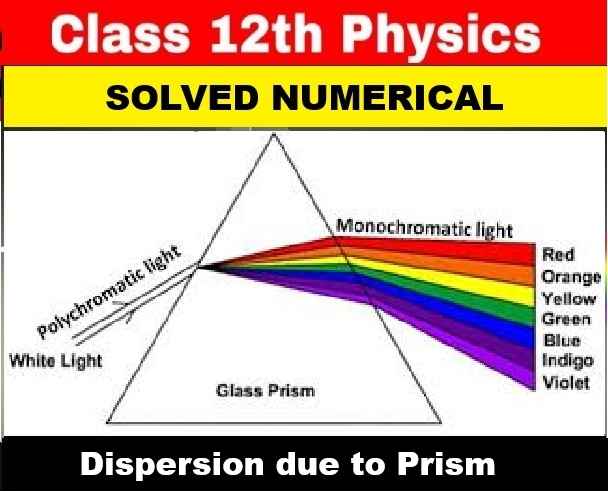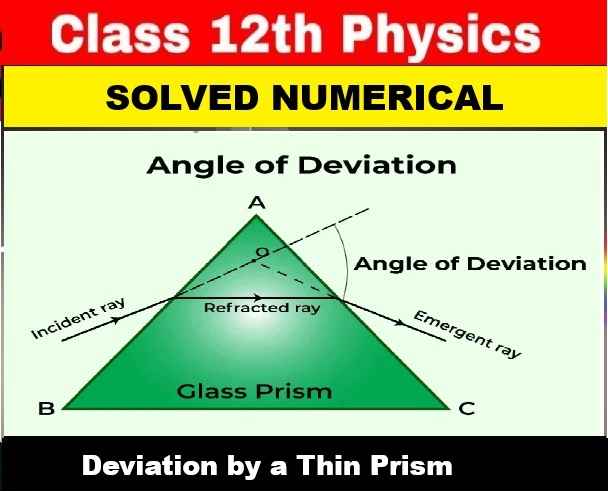Properties and uses of Magnet Class-6th Goyal Brothers Physics Solutions Chapter-6, Unit 2. We Provide Step by Step Answers of Objective, True/False, Correct/incorrect, Fill in the blanks, Match the following , Study Questions of Chapter-6, (Magnetism), Unit-2 (Properties and uses of Magnet). Visit official Website CISCE for detail information about ICSE Board Class-6.
Properties and uses of Magnet Class-6th Goyal Brothers Physics Solutions Chapter-6 (Unit-2)
| Board | ICSE |
| Class | 6th |
| Subject | Physics |
| Book Name | Goyal Brothers |
| Theme-6 | Magnetism |
| Unit-2 | Properties and uses of Magnet |
| Topic | Solution of exercise questions |
| Session | 2023-24 |
OBJECTIVE TYPES QUESTIONS
Properties and uses of Magnet Class-6th Goyal Brothers Physics Solutions Chapter-6 (Unit-2)
Que: A. Fill in the blank spaces by choosing the correct words from the list given below:
List: magnetized, electromagnets, poles, electric current, repel
1. The maximum magnetic strength of a bar magnet is at its __poles__ .
2. Similar poles of two bar magnets __repel__ each other.
3. An unmagnetized bar of steel can be __magnetized__ by rubbing a bar magnet along its length.
4. A magnet which operates only when __electric current__ flows through its insulated copper coil is called electromagnet.
5. Television sets use __electromagnets__ .
Que: B. State whether the following statements are true or false:
| Statements | True/False |
| 1. A freely suspended bar magnet points in east-west direction. | F |
| 2. Opposite poles of two different magnets repel each other. | F |
| 3. When a bar magnet is broken into number of pieces, each other. | T |
| 4. Magnets are stored in pairs, such that same poles face each other. | F |
| 5. Electromagnets used to remove nickel from a scrap of copper, zinc and nickel. | T |
Que: C. Statements given below are incorrect. Write the correct statements:
Question: 1. Attraction is the surest test of magnetism.
Answer: Repulsion is the surest test for magnetism.
Question: 2. A single bar magnet does not get demagnetized on its own over a period of time.
Answer: A single bar magnet gets demagnetized on its own after a long time.
Question: 3. When a soft iron rod is placed in an insulated coil carrying current, it changes into permanent magnet.
Answer: When a soft iron rod is placed in an insulated coil carrying current, it changes into an electromagnet.
Question: 4. Opposite poles of two different magnets repel each other.
Answer: Opposite poles of two different magnets attract each other.
Question: 5. Permanent magnet is used in common electric bell.
Answer: Permanent magnet is used in an electric bell is false.
Que: D. Tick (√) the most appropriate answer:
1. When a bar magnet is placed on a wooden board floating on the water, it aligns itself in the direction of:
(a) north-south
(b) east-west
(c) south-west
(d) none of these
Answer: option (a) north-south is correct.
2. A bar magnet is cut into four pieces. Each piece is:
(a) a complete magnet
(b) two pieces have only north pole
(c) two pieces have only south pole
(d) demagnetized
Answer: option (a) a complete magnet is correct.
3. A steel bar can be magnetized permanently by rubbing a bar magnet:
(a) along its length
(b) at its ends
(c) at its center
(d) none of these
Answer: option (a) along its length is correct.
4. An artificial magnet used for finding geographic is known as :
(a) electromagnet
(b) horse-shoe magnet
(c) magnetic needle
(d) bar magnet
Answer: option (c) magnetic needle is correct.
5. The surest test of magnetism is:
(a) attraction
(b) repulsion
(c) (a) and (b) both
(d) none of these
Answer: option (b) repulsion is correct.
Que: E. Match the statements in Column A, with those in Column B:
| Column A | Column B |
| 1. A thin and pointed magnetized steel needle used for finding geographic directions. | (a) Soft iron |
| 2. A pair of soft pieces of iron used in storing bar magnets. | (b) Steel |
| 3. A magnet which loses its magnetism as soon as the cause producing it is removed. | (c) Magnetic needle |
| 4. A material used for making permanent magnets. | (d) Electromagnet |
| 5. A material which gets magnetized on rubbing with magnet, but then loses its magnetism quickly. | (e) Magnetic keeper |
Answer:
| Column A | Column B |
| 1. A thin and pointed magnetized steel needle used for finding geographic directions. | (a) Magnetic needle |
| 2. A pair of soft pieces of iron used in storing bar magnets. | (b) Magnetic keeper |
| 3. A magnet which loses its magnetism as soon as the cause producing it is removed. | (c) Electromagnet |
| 4. A material used for making permanent magnets. | (d) Soft iron |
| 5. A material which gets magnetized on rubbing with magnet, but then loses its magnetism quickly. | (e) Steel |
STUDY QUESTIONS
Properties and uses of Magnet Class-6th Goyal Brothers Physics Solutions Chapter-6 (Unit-2)
Question: 1. (a) You are provided with a 15 cm long steel strip. By using a permanent bar magnet explain how you will magnetize the steel strip.
Answer: Hold the steel object in one hand. Stick the magnet anywhere on the steel about halfway along its length, then drag it to one tip. Repeat several times, stroking only in one direction, and only along half of the steel. The more you do this, the more magnetized the steel will become.
Question: (b) How will you verify the magnetic poles formed on the steel strip?
Answer: By attracting iron filings to the magnet, we get to know which is a magnet.
Question: (c) Suggest a simple way of demagnetization of above steel strip.
Answer: By heating the magnet to a high temperature. hammering the magnet frequently. flowing alternating current through a coil around the magnet and magnet is kept in east-west direction. rough handling of the magnet.
Question: 2. Why is repulsion considered as surest test of magnetization?
Answer: Repulsion is the surest test of the magnets, because a magnetic substance also has attractive property. Repulsion is the surest test because any substance made of iron, nickel, cobalt will also have attraction but won’t have repulsion. Repulsion and not attraction is a sure test of magnetism.
Question: 3. How can you make a magnet by the method of touching? Mention any two methods of touching.
Answer: We make magnets by exposing ferromagnetic metals like iron and nickel to magnetic fields. Moreover, when we heat these metals to a certain temperature, they get permanently magnetized.
The two methods of making a magnet are:
Induction method:
- This method involves placing the magnetic material (soft iron) close to a strong magnet without touching it.
- The soft iron bar becomes an induced magnet with the end nearer the magnet having opposite polarity to that of the magnet.
Electrical method:
- In this method, an electric current is passed through a coil wrapped around the soft iron bar.
- On the passage of current, the bar behaves as a magnet.
- Higher the magnitude of the electric current passed, the higher the magnetic strength of the bar and vice versa.
Question: 4. You are provided with a 5 cm long and 1/2 cm thick soft iron rod. How will you convert it into electromagnet?
Answer: By wrapping or passing electric current through soft iron rod you can convert it into electromagnet. Because electric current has magnetic effect.
Question: 5. How are the bar magnets stored? Explain, especially the role of magnetic keepers.
Answer: A magnetic keeper is a piece of wood or soft iron which is used in storing magnets because bar magnets get demagnetized when the poles are left free for a long time. In order to preserve the magnetism of the magnets, a keeper is kept across a pair of bar magnets with unlike poles beside each other.
Question: 6. A box contains coins made of nickel and copper. How will you separate the coins using a powerful bar magnet?
Answer: We will easily separate the coins because nickel is magnetic and copper is not magnetic. so when we place a powerful magnet in box then all the nickel coins get attracted by magnet and copper coin remain in the box. so you can easily separate them.
Question: 7. State six important properties of a bar magnet.
Answer: Six important properties of a bar magnet:
- A magnet attracts magnetic substances (like iron, steel, cobalt, nickel) towards itself.
- When a magnet is suspended freely, it points in the north-south direction.
- Similar poles of magnets repel each other.
- Opposite poles of magnets attract each other.
- When a magnet is broken, then each broken piece is a complete magnet with a new pair of poles.
- If a magnet is heated or handled roughly, it loses its magnetism.
Question: 8. State four uses of magnets/electromagnets.
Answer: Uses of magnets:
There are numerous uses of a magnet, and some of them are listed below:
- It is used in a compass to tell the directions and the poles of the earth’s magnetic field.
- It is used in Hospitals and medical facilities for many purposes like MRI machines using magnetic flux.
- It is used as a fridge magnet.
- It is also used in furniture and household appliances.
Uses of Electromagnets:
There are only a few uses of electromagnets which are mentioned as follows:
- It is used in generators, motors and transformers.
- It is also used in headphones and loudspeakers.
- It is used as a transducer.
- It is also used in hard drives and disks as storage media.
Question: 9. Distinguish between permanent and temporary magnets.
Answer: The main points of difference between temporary and permanent magnets are:
| Permanent magnets | Temporary magnets |
| 1. Permanent magnets are those magnets that retain their magnetism for a long period of time. | Temporary magnets are those magnets that lose their magnetism as soon as the cause producing their magnetism is removed. |
| 2. Materials like iron, nickel, and cobalt are used for making permanent magnets. | Iron materials get magnetized very easily, hence iron is used for making temporary magnets. |
| 3. Bar magnet and horse-shoe magnet are common examples of permanent magnets. | Electromagnets are the common examples of temporary magnets. |
| 4. Permanent magnets are used in magnetic compasses, magnetic door catches, motors, generators, loudspeakers, etc. | Temporary magnets are used in cranes to lift massive loads, electric bells, transformers, circuit breakers |
Question: 10. Discuss the ways of demagnetization.
Answer: The magnetic properties of a magnet can be destroyed by, also called demagnetization:
- Heating magnet to very high temperature.
- Dropping the magnet frequently.
- Hammering the magnet repeatedly.
- Bringing the magnet in contact with the like poles of other magnets repeatedly.
- Passing the electric current through magnet.
- Leaving the poles of the magnets bare for a long time (called self-demagnetization of a magnet).
— : End of Properties and uses of Magnet ICSE Class-6 Goyal Brothers Physics Solutions Chapter-6 Unit-2:—
Return to- ICSE Class -6 Goyal Brothers Physics Solutions
Thanks
Please share with your friends if you find it useful


